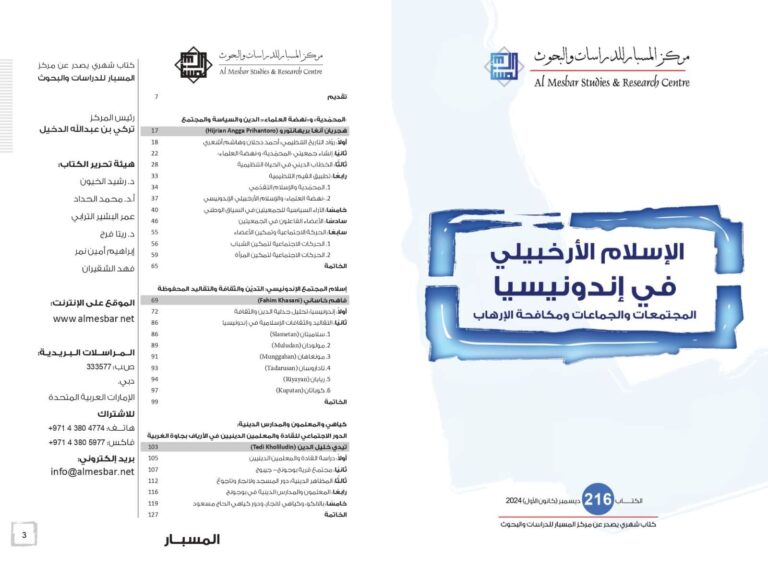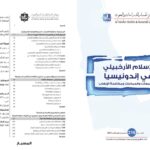In the realm of Islamic scholarship, fiqh literature (Islamic jurisprudence) has long been a cornerstone for guiding religious practices. However, a fascinating evolution has recently emerged in the way ḥāshiyah (glosses) are used within the context of Madurese pesantren (Islamic boarding schools). A study published by Mahbub Ghozali and colleagues in the Journal of Islamic Law (Scopus Q1) sheds light on how these glosses have evolved into a transformative force, reshaping the way worship is practiced in Madura. This shift highlights the intersection of traditional Islamic law with local religious practices, ultimately creating a new form of worship that blends fiqh with the spiritual needs of Madurese society.
The study, titled “Bridging Fiqh and Religious Practice: Actualizing the Function of Ḥāshiyah as a Form of Worship in the Scribal Traditions of Madurese Pesantren Literature”, explores how local religious leaders, or kiai, in Madura adapted the role of ḥāshiyah from a simple tool for clarifying texts to a powerful medium for shaping religious behavior. This evolution shows how fiqh literature, particularly within the Shāfi‘ī school of jurisprudence, was not just a set of laws but a dynamic component of religious practice in Madura.
The Role of ḥāshiyah in Islamic Scholarship
Traditionally, ḥāshiyah served as an explanatory tool, providing additional context for complex legal and theological terms in fiqh texts. However, the study reveals that in Madura, ḥāshiyah became a transformative element, allowing kiaito adapt Islamic law to the cultural and spiritual realities of their communities. This shift was largely driven by the religious dynamics of 19th-century Madurese society, which leaned heavily towards mystical practices and spiritual paths (tarekat).
As Madura experienced increasing influence from mystical traditions, particularly those linked to the Shāfi‘ī school of thought, kiai began using ḥāshiyah to bridge the gap between traditional Islamic law and local practices. By doing so, they not only clarified complex legal concepts but also provided guidance for integrating mystical and spiritual practices with mainstream fiqh. This helped Madurese Muslims reconcile their devotion to Islamic law with their deepening involvement in spiritual traditions.
How Madurese Pesantren Shaped New Religious Practices
The study demonstrates that the Ḥāshiyah became more than just a tool for linguistic clarification; it became a means for kiai to influence how Islamic law was practiced and understood in everyday life. The Madurese pesantren played a central role in this transformation, as they selected specific fiqh texts aligned with the Shāfi‘ī madhhab and adapted them to address local religious and cultural needs.
One of the key findings of the study is how kiai used ḥāshiyah to challenge practices that deviated from fiqh logic, particularly those associated with mystical traditions. These glosses went beyond basic clarifications and actively reshaped the way Madurese Muslims understood their religious duties, offering guidance that reinforced the importance of adhering to fiqh while embracing local spiritual practices.
The Spiritual Impact of ḥāshiyah on Madurese Muslims
What sets this study apart is its focus on how ḥāshiyah helped Madurese kiai shape a new form of religious practice that harmonized fiqh with the region’s mystical inclinations. Kiai in Madura were not just educators; they were spiritual leaders who helped their communities navigate the complexities of Islamic law while fostering a deeper connection to their faith.
The study also sheds light on the shared religious literature used in pesantren across Indonesia, emphasizing the role of Madurese kiai in standardizing educational materials. This collective effort to promote specific fiqh texts helped create an objective religious reality that became widely accepted as the standard in Indonesian pesantren. As a result, ḥāshiyahbecame a tool not only for textual explanation but for guiding religious practice and behavior.
The Continued Relevance of ḥāshiyah in Islamic Worship Today
Ghozali’s study underscores the continued importance of ḥāshiyah in shaping religious practice, showing that Islamic jurisprudence can evolve in response to the needs of modern worshippers. This historical development in Madurahighlights how fiqh can adapt and remain relevant across time, ensuring that Islamic law continues to resonate with contemporary Muslims. The ability to integrate local spiritual practices with Shāfi‘ī jurisprudence creates a more holistic approach to worship, one that respects tradition while addressing the unique needs of each community.
This study offers valuable insights for modern Islamic scholarship and serves as a reminder of the flexibility of fiqh to meet the spiritual needs of diverse communities. By embracing the transformative power of ḥāshiyah, Madurese kiaishowed how Islamic law can evolve and continue to guide religious practice while maintaining its roots in the core principles of Islamic jurisprudence.
For more details, explore the full article published in the Journal of Islamic Law here.







